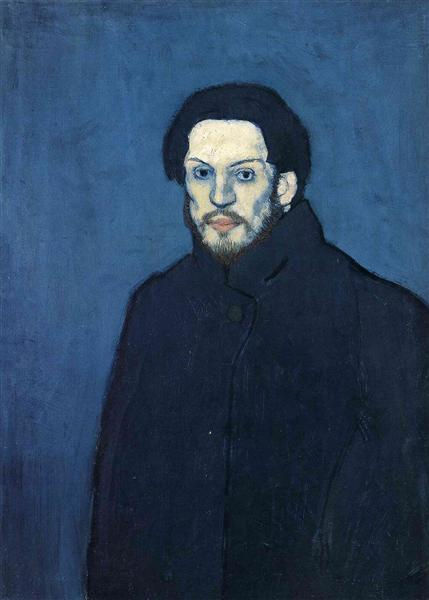Think Bigger: Lessons on Innovation, and the Art of Choosing
- hummblylife
- Jun 25
- 5 min read
On June 24th, 2025, a Masterclass organized by Esun Bank and Commonwealth Magazine inspired many entrepreneurs and people in the marketplace here in Taipei. The keynote by Sheena Iyengar, author of The Art of Choosing and Think Bigger, sparked a deep reflection. She opened with the simple words, "Everything starts with a story."
She shared with us three real stories of her own childhood as her family migrated from India to Canada and then to the US; Stories about how she was diagnosed with retinitis pigmentosa, and lost her sight as a child; Stories about how her father passed away when she was only thirteen.
These three personal stories— were not narrated just to recount what happened, but to illustrate how life often presents us with a fixed set of options to choose from. Instead of settling for one of those limiting choices, she crafted her own path and opened the door to a world of new possibilities. That’s what made the stories so powerful: they weren’t about being defined by her circumstances, but about expanding what was possible through choice.
She challenged us to reflect on the journey between 'who we are' today and 'who we want to be.' What do you think determines that path—fate, chance, or choice?
Choose Like It Matters (Because It Does)
We live in a world filled with uncertainty and constant change—where war, economic crises, pandemics, immigration challenges, the rise of AI, and political instability are all part of the landscape. In such a world, it’s more important than ever to learn how to choose wisely, to be intentional in our decision-making, and to pass on this mindset to the next generation.
“Think like an idealist, choose like a pragmatist.” — Sheena Iyengar
One good illustration she used was showing us this portrait and asking, do you know who painted it?

No one replied, and Professor Iyengar continued by showing this other portrait:

Some people responded "Picasso". And they were right.

"What invention came about during this century that may have affected artists?" —She asked.
The answer was: Photography.
What were other contemporaries reaction to the invention of cameras?
"From today, painting is dead" is attributed to French painter Paul Delaroche, who is said to have exclaimed it upon seeing the first photographs.
"If photography is allowed to supplement art in some of its functions, it will soon have supplanted or corrupted it altogether..." - Charles Baudelaire
Their choice was to criticize or show concern towards the invention of cameras and photography, fearing it would make artists irrelevant and lose their jobs.
On the other hand, Picasso's choice was to paint portraits that would clearly distinguish himself from artists, evoke different emotions, repaint his own self-portrait with a completely different style, moving away from realistic self-portraits to other styles, most notably Cubism.
So... Why is Pablo Picasso one of the most famous artists in the world? Professor Iyengar would say besides his talent, he made really good choices. He made art about emotion, movement, and perspective. He grew into his new context.
So can we.
From the quotes you see above, replace the word 'painting' or 'art' with AI... what is your choice of action with the rising of new technologies?
Goal setting
Professor Iyengar engaged with the audience by asking: What do you want to accomplish in 1, 5, or 10 years? More importantly—how do you approach that goal?
According to research by Dr. Gail Matthews at Dominican University:
23% success rate if you only think about the goal
42% if you write it down
75% if you share it with someone you trust (mentor, teacher, partner)
👉 The lesson? Don’t keep your goals in your head. Accountability matters! Write them. Share them. Let them grow.
Innovation = Memory + Learning
Iyengar beautifully puts it: “The foundation of innovation is not just creativity, but the combination of memory (information we already have) and learning.”
Innovation happens when you:
Draw from what you already know (your memory)
Expose yourself to new ideas (continued learning)
And combine the two into new patterns and possibilities
That’s how breakthroughs are born.
Problem? Or Just the Wrong Question?
When we are overwhelmed—by parenting or professional decisions, a career shift, a family conflict—we often rush to fix the surface issue. But Iyengar urges us to spend more time understanding the real problem. Turn it into one question. Then break it down into smaller, specific questions.
Our goal is not to slap duct tape on issues but to listen, reflect, and craft thoughtful responses. Sometimes that means pulling wisdom from unexpected places—from other “boxes,” as Iyengar says.
How do you think "outside the box"? We go into other boxes and find useful tactics from different domains (different industries, sometimes completely unrelated domains).

One example Professor Iyengar mentioned:
The Blockbuster business once operated much like a library system—you borrowed a movie and returned it within a set timeframe. But as movies transitioned from physical VHS tapes and DVDs to digital formats, the old model began to fall short. Innovation required thinking outside the box—or rather, into another one. By looking at the 'membership' model used by gyms, the industry found a new path: transforming video rental into a subscription-based model.
Iyengar's 6-Step Innovation Process (from her book "Think Bigger")
Think Bigger: A 6‑Step Innovation Process
From her book Think Bigger, Sheena offers a clear methodology for innovating:
Frame the right question – Choose the problem, what problem do you want to solve?
Break down the problem – What are the sub-problems that make up your big problem?
Compare Wants – What is your decision-making criteria?
Search in and Out of the Box – What solutions have been tried to date? use analogies and cross-industry insights
Choice Map – She compared this to a big excel spreadsheet with all our memories and knowledge. Combine these in new ways until you "see" an innovation.
Collaborative iteration – Do others see what you see? innovation thrives in teams and shared problem-solving, not just solitary brainstorming
With regards to our Choice Map, Prof. Iyengar encourages us to:
Diversify inputs (read widely, explore unfamiliar topics). For Albert Einstein for example, he had years of diversified inputs by working at the Swiss Patent Office. While he is renowned for his scientific theories, his work at the patent office involved assessing the novelty and feasibility of various inventions, including a gravel sorting machine, a humidity-sensitive weather station, and an electric typewriter.
Review our own knowledge (ask what we already understand about a problem)
And then combine the two to see connections others might miss.
This idea aligns with her larger message: that structured thinking, not just “aha!” moments, leads to truly innovative solutions.
Takeaways
Let’s choose growth, innovation, effective decision making—not just for ourselves, but for the homes we nurture, the work we build, and the community we want to serve!
We should continue to update our “Choice Map,” where old memories can be combined with new learnings. So that we can nurture a deep well of experience and awareness to draw from when life throws new challenges our way.
Choose the right problem or question, break it down into sub-problems, combine the solutions and you will have innovation!
Be ready to adapt, connect and be creative when facing changes, such as the rise of AI. We have a choice of what to do towards the unfamiliar and new.
Thinking outside of the box sometimes means searching for inspiration in seemingly irrelevant boxes (that belong to different domains / industries).
Innovation and effective decision-making aren’t just for CEOs or artists. They’re for parents. For kids. For anyone with a heart for growth.
Book Recommendations
The Art of Choosing by Sheena Iyengar | Amazon

Think Bigger by Sheena Iyengar | Amazon
















































Comments